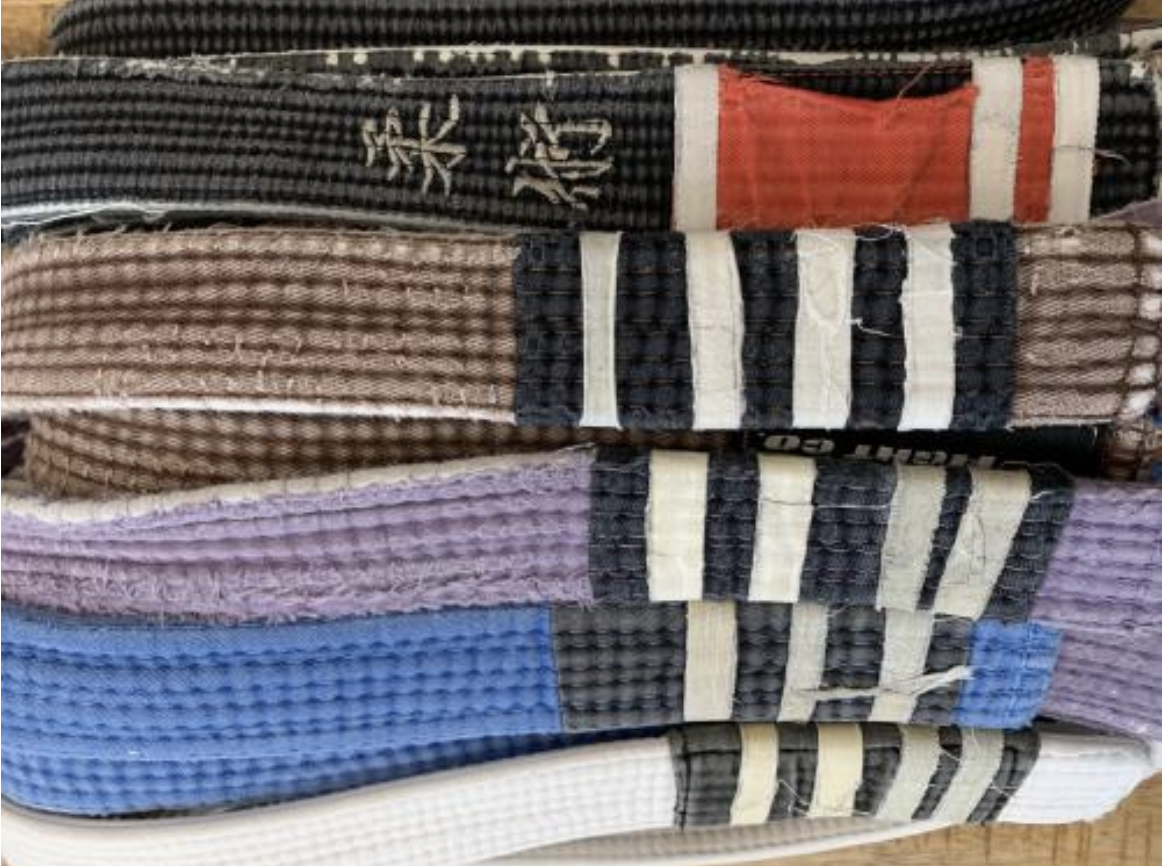Brazilian Jiu-Jitsu Belt System
At Archangel Jiu-Jitsu we apply practical standards for graduating students from one level to the next: mat time, personal growth, and core competency of the positions and techniques. The main distinction between the colored belts is the increasing sophistication of the positions, and ease in which the techniques are applied.
Belt System
Unlike other martial art styles, in Brazilian Jiu-Jitsu the student is not eligible for their first adult belt until they are 16 years old.
In addition to the individual belts, stripes are added throughout the process to signify your progress towards the next rank. The student receives four stripes before becoming eligible for the next belt level.
Children’s Belt System
- White
- Gray
- Yellow
- Orange
- Green
Adult Belt System
- White
- Blue
- Purple
- Brown
- Black
- Red
Belt System Progress Guide
White Belt to Blue Belt (up to 12 months)
A blue belt understands and implements the basic strategy – take the opponent down and submit. He or she can carry out the basic strategy upon other students who have already been promoted to blue belt.
Because BJJ has very few belts, there is an enormous technical disparity between white belt ready for blue, and blue belt ready for purple.
Blue Belt to Purple Belt (average 3 years)
Purple belt is often the most significant obstacle over which the Jiu-Jitsu practitioner must overcome. Generally it takes the same amount of time, if not more, to attain a purple belt in BJJ as it does a black belt in most martial arts styles. The good news is most students who reach purple belt go on to become black belts and embrace BJJ training for life.
A purple belt has knowledge of most of the techniques and situations within the system, and has determined his/her favorites. These favorite techniques become part of his or her tactical approach to the basic strategy. The student’s comprehension of the techniques allow him/ her to anticipate another’s movement and react accordingly. The unmistakable tactical progress from blue to purple belt is the ability to use techniques in combination rather than try to force them by sheer strength and will.
Purple Belt to Brown Belt (up to 2 years)
Brown belt is merely a transition stage between purple belt and black belt. As the student progresses through the ranks, he or she is expected to embrace BJJ training in a broader manner than a beginner or blue belt. To become brown belt a student is expected to conduct him or herself accordingly. He or she is an ambassador of our school and BJJ as a whole, on and off the mat.
Brown Belt to Black Belt (up to 2 years)
The Black Belt in BJJ, as in most martial arts, represents the highest level of achievement. By the time a student attains black belt rank, his depth of knowledge makes him a competent teacher. His/her competence extends beyond execution, into biomechanics, principles of leverage, and body control. This perception allows him or her to create new techniques or combinations and seemingly develop a personal self-defense system.

From One Level to the Next
At Archangel Jiu-Jitsu we apply practical standards for graduating students from one level to the next: mat time, personal growth, and core competency of the positions and techniques. The main distinction between the colored belts is the increasing sophistication of the positions, and ease in which the techniques are applied.
You become students of combat so if the enemy calls you will triumph!
Get in touch to join the Archangel family today.